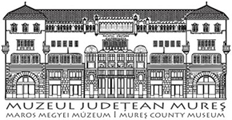Marisia - Maros Megyei Múzeum Évkönyve 32/2. (2012)
Articles
UPDATING OUR KNOWLEDGE ABOUT THE ROMAN FORT FROM BRANCOVENE§TI, MURE§ COUNTY* SZILAMÉR-PÉTER PÁNCZÉL Mures County Museum, Tärgu Mures, RO László lenkey Eötvös Loránd University, Budapest, HU MIHÁLY PETHE Eötvös Loránd University, Budapest, HU Nándor laczkó Babes-Bolyai University, Cluj-Napoca, RO As part of the RLR (Roman Limes Route) and LIDOR (Limes Dacicus Orientalis) projects geophysical and topographical survey took place in the retentura of the auxiliary fort from Bräncovenesti. In the present paper, based on the recent results, we made an attempt to corroborate all the available archaeological data, georeference the former excavations and propose a 3D visualisation model of the fort. Keywords: Roman, auxiliary fort, survey, magnetometry, medieval church In 2011 and 2012 at the initiative of the Mures County Museum in the framework of the RLR (Roman Limes Route) and LIDOR (Limes Dacicus Orientalis) projects (Visy 2008; 2009a; 2009b; Szabó 2009; Pánczél et al. 2011) geophysical and topographical survey took place in the retentura of the Roman auxiliary fort from Bräncovenesti in Mures County (Hungarian Marosvécs). The Roman fort from Bräncovenesti is one of the best known sites (PL 1/1) of the eastern border of the Dacian provinces (related to the research history of the site, see: Paulovics 1944, 23-26; Protase-Zrínyi 1994a; 1994b; Lazar 1995, 84-88; Gudea 1997, 56-57; Popa et al. 2010, 106-107). Due to the location in the Mures Valley, beyond the Deda pass, on a high terrace - with an altitude varying from 337 m to 431 m - next to the right riverbank, it had a major strategic importance (Pi. 2/1-2). Linked probably to the forts of Orheiu Bistrifei (Bistri(a- Näsäud County) and Cälugäreni (Mures County) by the eastern limes road and relying on the natural defence offered by the Cälimani and Gurghiu Mountains combined with a system of * We would kindly thank Máté Szabó and Antal Kosza for their help with the illustrations, Koppány-Bulcsú Ötvös for his help during the research, and Ünige Bencze, Tamás Lipovics and Silvia Mustafa for the corrections made on the text. The Roman Limes Route cultural project was financed by the Administration of the National Cultural Fund. MARISIA XXXII, p. 105-1 15
